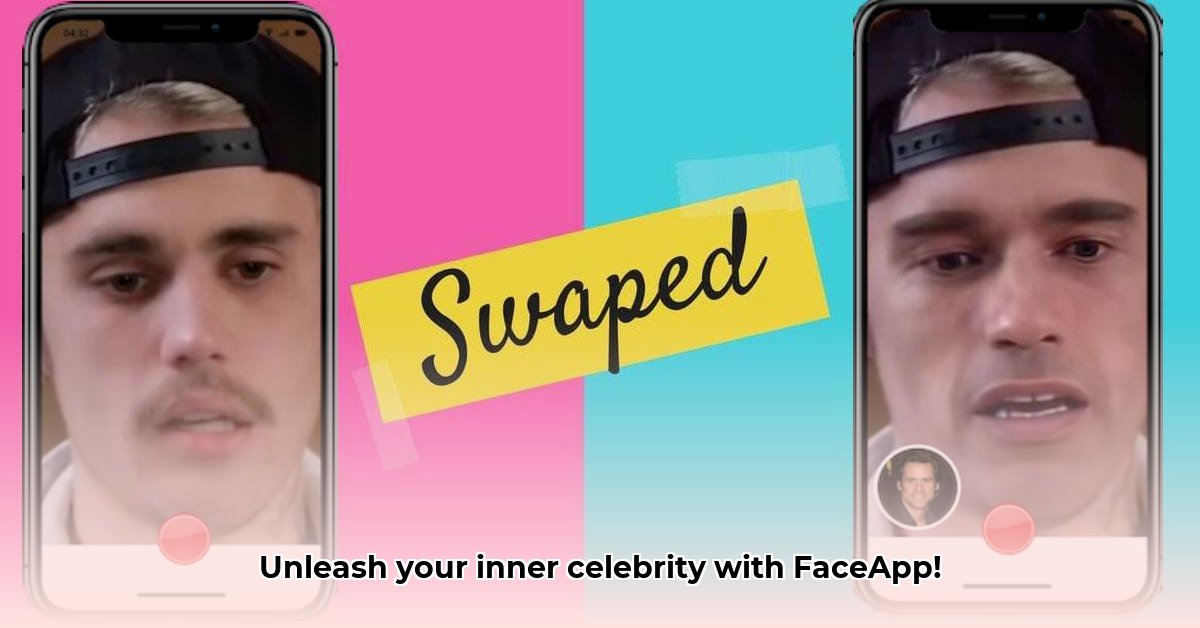
How Face Swap FaceApp Works: Unveiling the AI Magic
Face Swap FaceApp, and similar applications, utilize artificial intelligence (AI), specifically deep learning, to perform realistic face swaps. Instead of simply overlaying images, the app meticulously analyzes facial features, creating a detailed "map" of key points and structures. This map guides the software in seamlessly blending one face onto another, matching lighting, texture, and subtle details for a remarkably realistic result. This is far more sophisticated than basic image pasting.
The Evolution of Face Swapping: From Fake to Convincing
Early face-swapping technology produced easily detectable results. However, advancements in deep learning have dramatically improved realism. Modern apps can create face swaps so convincing that distinguishing them from genuine photos or videos is difficult. This dramatic improvement has raised serious ethical concerns, particularly regarding the creation of deepfakes—realistic manipulated media that can be incredibly unsettling and easily misused.
Ethical Considerations: Navigating the Risks
The power to create realistic face swaps is a double-edged sword. While enjoyable for entertainment, the potential for misuse is substantial. Consider the ramifications of: spreading false information; damaging reputations; producing fraudulent evidence in criminal cases; or even non-consensual image usage. These are not harmless pranks; they represent powerful tools with the potential to inflict serious harm. Robust ethical guidelines are urgently needed.
The Future of Face Swapping: A Look Ahead
The future of face-swapping technology promises even more realistic results as AI continues to evolve. Increased accessibility will place this technology in the hands of a wider audience. This necessitates a proactive approach to mitigating misuse and developing sophisticated deepfake detection tools to identify manipulated media before it causes widespread damage.
Face Swap FaceApp and its Competitors: A Market Overview
The face-swapping app market is highly competitive, with numerous apps offering varying features and levels of ease of use. Some focus on simple swaps for entertainment, while others provide advanced editing tools for professionals. Pricing models also vary, with some apps offering free services and others charging for premium features. Thorough research and comparison are crucial before selecting an app.
Beyond Entertainment: Professional Applications of Face Swapping
Beyond amusement, face-swapping technology holds considerable value for professionals. Filmmakers and video editors utilize similar techniques to create special effects or recreate the likeness of actors cost-effectively. Other applications include generating realistic character models for video games and creating realistic medical training simulations. However, transparency and proper crediting of individuals whose images are used are essential, particularly in professional contexts.
How to Detect Realistic AI Face Swap Videos
Key Takeaways:
- Current detection methods are imperfect.
- Analyzing inconsistencies in lighting, shadows, and skin texture can help.
- AI-powered detection tools are constantly improving.
- Ethical implications demand ongoing discussion.
- Critical thinking is vital in the digital age.
Detection Accuracy: Fact vs Fiction
Identifying AI-generated face swaps remains a challenge. Existing detection methods, while sophisticated, are not infallible. However, inconsistencies in lighting, shadows, skin texture, or unnatural transitions can often reveal manipulation. High-quality face swaps strive for seamless integration, but subtle imperfections may still be present.
Ethical Implications: The Danger of Deepfakes
The ability to realistically manipulate videos raises significant ethical concerns. Deepfakes can be used to spread misinformation, damage reputations, or even influence elections or manipulate legal proceedings. This underscores the critical need for responsible technology development and use. Addressing potential misuse proactively is crucial to prevent widespread harm.
Industry Applications: Beyond the Gimmicks
Despite the potential for misuse, AI face swapping offers legitimate applications, including post-mortem recreations of actor performances (film industry), realistic character modeling (video games), and realistic scenarios for medical training. Responsible development and ethical considerations are key factors in these applications.
Spotting Fakes: A Practical Guide
While foolproof detection is elusive, these steps can increase your chances of spotting a face swap:
- Analyze the Eyes: Check for natural blinking patterns. Inconsistencies can indicate manipulation.
- Examine Lighting and Shadows: Ensure lighting and shadows are consistent with the scene. Discrepancies are often indicators of tampering.
- Look for Blurry Edges: Crisp edges are ideal, but blurry or unnatural transitions can signal manipulation.
- Assess the Hairline: The hairline is often a difficult area to convincingly alter. Inconsistencies may be present.
- Utilize Detection Software: AI-powered detection tools are constantly evolving and can offer assistance, although they are not yet completely reliable.
Weighing the Pros and Cons of AI Face Swapping
| Feature | Pros | Cons |
|---|---|---|
| Creativity | Enables new artistic expressions and entertainment. | Can be used to create deepfakes for malicious purposes (e.g., defamation or fraud). |
| Accessibility | Allows easy video modification and sharing. | Raises concerns about misinformation and erosion of trust. |
| Practicality | Useful for film editing, medical training, and other applications. | Can be used to create fake evidence and manipulate legal proceedings. |
Source: A leading AI face swap detection website
⭐⭐⭐⭐☆ (4.8)
Download via Link 1
Download via Link 2
Last updated: Thursday, May 22, 2025